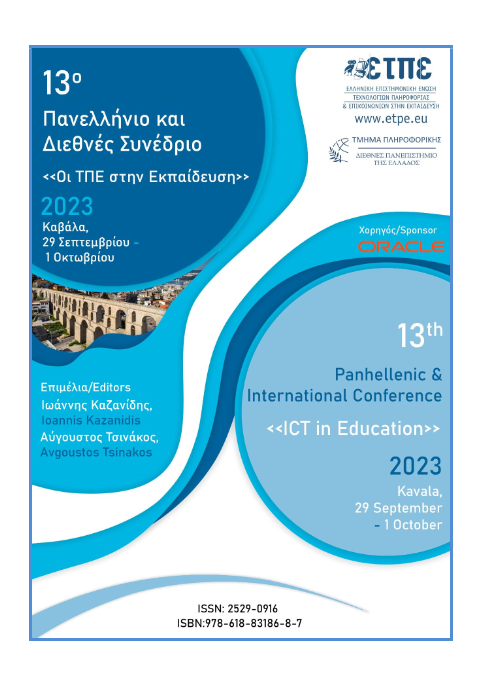Popularization of instructional design in online courses with Artificial Intelligence
Περίληψη
The presentation focuses on the integration of AI in instructional design and education. It
explains AI's capabilities, such as generating human-like language and assisting with complex
tasks like coding, mathematical problems, and creating educational content. It highlights the
transformative potential of AI in education, stressing the importance of critical thinking and
intellectual engagement alongside technological advancements.
The presentation introduces the "9 Levels of AI for Instructors" framework which tries to
categorize instructors’ interactions with AI. The first three levels lay the groundwork for
utilizing AI in education. At the first level, instructors can ask AI simple questions to recall
generic knowledge, accessing vast databases to retrieve accurate information quickly. The
second level involves simple actions on this knowledge, such as summarizing texts, extracting
key points, or rephrasing content to suit different comprehension levels. The third level
enables AI to generate educational artifacts, such as flashcards, timelines, and quizzes,
streamlining the creation of diverse instructional materials to enhance student engagement
and understanding. The fourth level, "Engineered Prompts," involves crafting specific and
detailed prompts to optimize AI responses for tasks such as creating course content,
generating detailed learner insights, and applying instructional theories effectively. The fifth
level, "Engineered Prompts for Learners," involves creating detailed prompts to gather
specific information about learners' characteristics and needs, enabling tailored instructional
strategies. The sixth level, "Engineered Prompts for Instructional Design," focuses on applying
instructional theories, like Bloom's taxonomy, to develop comprehensive learning objectives
and effective course outlines. The seventh level, "Creative Prompts for Instructional Design,"
encourages instructors to use AI to generate unprecedented and inspiring responses, fostering
creativity and innovation in educational content creation. The eighth level, "Use New AIPowered Learning Tools," emphasizes employing advanced AI tools that require minimal
prompting, streamlining the instructional design process. The ninth and final level, "A New
Language of Instructional Design," integrates AI to create a cohesive instructional design
language, combining knowledge recall, actions on knowledge, and creative instructional
approaches to empower educators and enhance the learning experience. This level envisions
a future where AI seamlessly supports and elevates educational practices across various
domains.
Λεπτομέρειες άρθρου
- Πώς να δημιουργήσετε Αναφορές
-
Palaigeorgiou, G. (2024). Popularization of instructional design in online courses with Artificial Intelligence. Συνέδρια της Ελληνικής Επιστημονικής Ένωσης Τεχνολογιών Πληροφορίας & Επικοινωνιών στην Εκπαίδευση, 1, 002. ανακτήθηκε από https://eproceedings.epublishing.ekt.gr/index.php/cetpe/article/view/7238
- Ενότητα
- Articles



